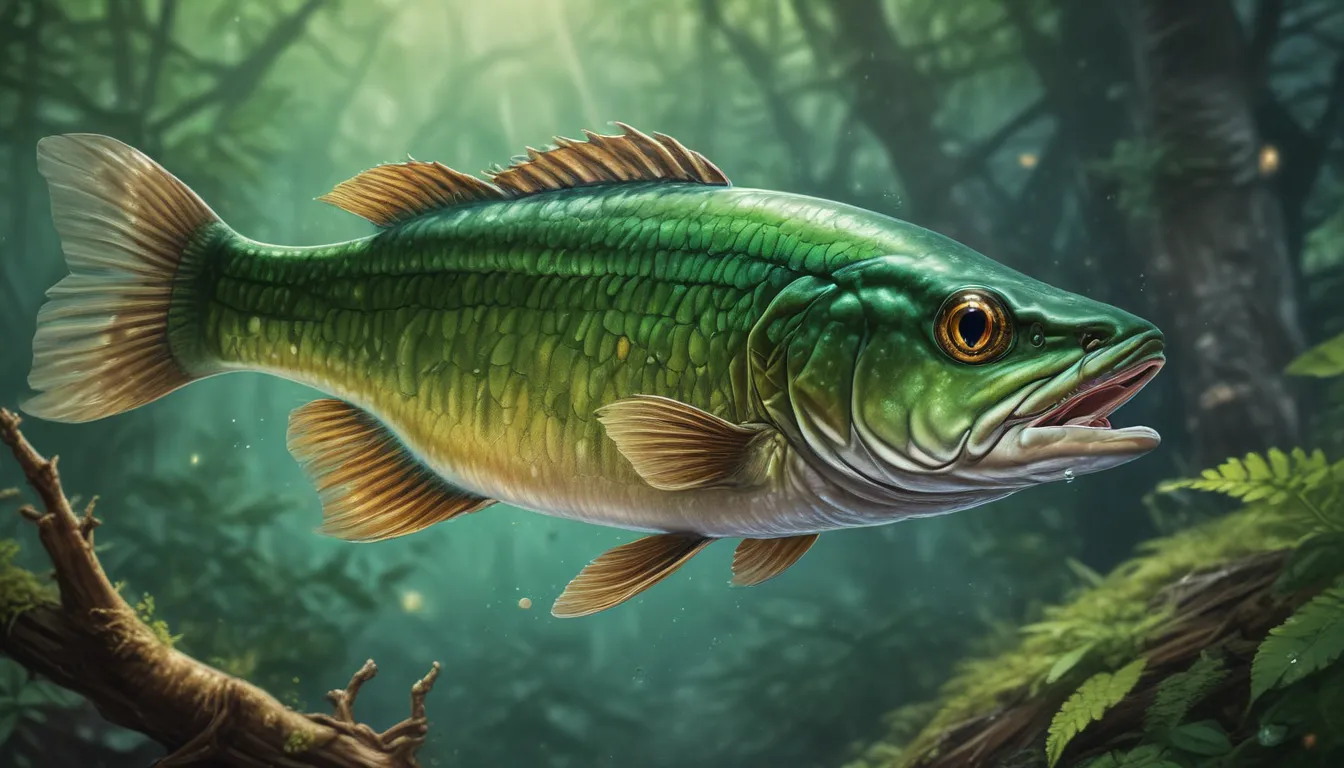The pictures we use in our articles might not show exactly what the words say. We choose these pictures to make you interested in reading more. The pictures work together with the words but don’t take their place. The words still tell you the important facts.
Are you curious about the vibrant world of emerald shiners? These small, colorful fish are more than just a pretty sight in freshwater habitats across North America. Dive deep into the fascinating realm of emerald shiners as we uncover 18 interesting facts that will leave you in awe of these tiny aquatic creatures.
A Closer Look at Emerald Shiners
Emerald shiners, scientifically known as Notropis atherinoides, are members of the cyprinid family and are famed for their dazzling emerald-green coloration. These small fish, typically measuring around 2-3 inches in length, are commonly found in large schools, where they play a crucial role as prey for larger predatory fish and birds.
Habitat Preferences of Emerald Shiners
Emerald shiners primarily inhabit the Great Lakes region of North America, with a strong presence in Lake Erie. Their adaptability to different water conditions allows them to thrive in various freshwater environments, making them essential components of the ecosystem.
The Diet of Emerald Shiners
Feeding primarily on plankton and small aquatic insects, emerald shiners serve as important forage fish in the food chain. Their role as a food source for larger predatory fish highlights their significance in maintaining the balance of aquatic ecosystems.
Intriguing Behaviors of Emerald Shiners
These dynamic fish exhibit fascinating behaviors, such as their strong instinct to school together for protection. During the breeding season, male emerald shiners display vibrant colors to attract females, showcasing their unique reproductive strategies.
The Lifecycle of Emerald Shiners
With an average lifespan of 2-3 years, emerald shiners engage in diurnal migratory patterns, moving towards the water's surface during the day and returning to deeper areas at night. Their fast swimming abilities enable them to evade predators, contributing to their survival in the wild.
Conservation Efforts to Protect Emerald Shiners
Despite their resilience, emerald shiners face threats from pollution, habitat destruction, and overfishing in certain regions. Conservation organizations work tirelessly to safeguard their habitats and populations, recognizing the importance of these fish as indicators of freshwater ecosystem health.
Unveiling the Ecosystem Role of Emerald Shiners
As integral components of the food chain, emerald shiners provide nourishment for a variety of bird species, including herons, gulls, and kingfishers. Their ability to spawn in large numbers and lay adhesive eggs on submerged vegetation leads to rapid population growth under favorable conditions.
Delving Deeper into Emerald Shiner Facts
- Emerald shiners are commercially important for recreational fishing as bait due to their abundance and size.
- Their well-developed sensory organs, including lateral lines, aid in detecting movement and vibrations in the water.
- The population of emerald shiners serves as an indicator of the overall health of freshwater ecosystems.
- Conservation efforts are essential to ensure the long-term survival of emerald shiners amidst environmental challenges.
Conclusion: A World of Wonder with Emerald Shiners
In conclusion, the vibrant world of emerald shiners offers a glimpse into the intricate web of freshwater ecosystems. From their unique characteristics to their vital role in the food chain, these small fish captivate researchers and nature enthusiasts alike with their resilience and adaptability. By understanding and appreciating the significance of emerald shiners, we can contribute to their conservation and the preservation of freshwater habitats.
FAQs About Emerald Shiners
-
Where can Emerald Shiners be found?
Emerald Shiners are native to freshwater habitats in North America, particularly in the Great Lakes region and surrounding tributaries. -
What do Emerald Shiners eat?
These fish primarily feed on small aquatic invertebrates, including zooplankton and insect larvae. -
Are Emerald Shiners commercially important?
Yes, Emerald Shiners are often used as bait in recreational fishing due to their size and abundance. -
Do Emerald Shiners have any predators?
Yes, larger predatory fish such as bass, walleye, and pike feed on Emerald Shiners as part of their diet. -
Are Emerald Shiners endangered?
While they are not currently listed as endangered, habitat loss and pollution are potential threats to their populations. -
Do Emerald Shiners have any unique behaviors?
Yes, one of their interesting behaviors is their ability to swim in tight schools, providing protection against predators. -
Can Emerald Shiners be kept as pets?
Due to their specific habitat requirements and small size, Emerald Shiners are not commonly kept as pets. -
How do Emerald Shiners reproduce?
Emerald Shiners spawn in large groups, with females depositing adhesive eggs on submerged aquatic vegetation. -
Are Emerald Shiners a popular choice for research studies?
Yes, the Emerald Shiner is often used as a model organism in studies related to fish ecology and behavior.
Explore the Enchanting World of Emerald Shiners
As you embark on a journey of discovery with emerald shiners, remember to appreciate the beauty and importance of these small yet significant fish in the aquatic realm. Their resilience, adaptability, and ecological significance make them invaluable contributors to freshwater ecosystems. Let's continue to marvel at the wonders of nature and strive to protect the habitats that sustain the life of emerald shiners and many other species.






